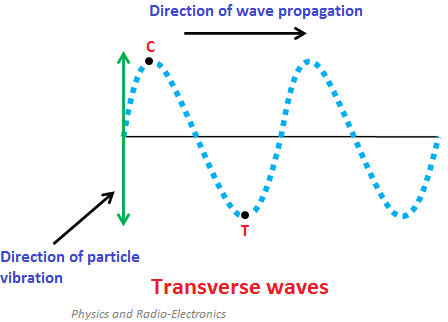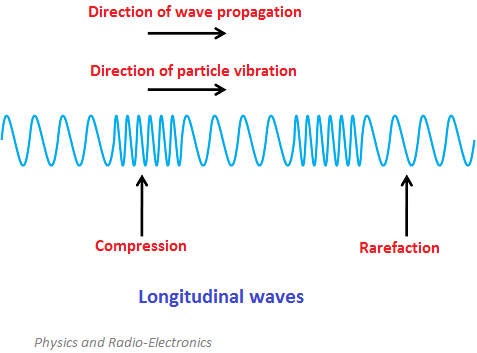Waves are the disturbance that travels from one location to another location through any medium. We can observe the disturbance that travels from one end to another end. For example, if the first coil of the slinky is given forth and back vibration then we can observe the motion of disturbance.
Category of waves
We can categorize the wave based on individual particles of the medium, moves in the direction of the medium. The categories of waves based on leads are transverse waves and longitudinal waves.
Transverse wave
A transverse wave is a type of wave in which the particles move in the direction perpendicular to the direction of the wave. For example, slinky is stretched out in the direction of the classroom. The pulse in the slinky is introduced into the slinky on the left side by vibrating the first coil up and down. Energy will be transported from left to right in the slinky. Whenever the energy is transported from left to right, the coils of that medium will be transported from upward and downward. In that case, the particles of the medium will be perpendicular to the medium of pulse move. Transverse waves are always represented by the particular motion that is perpendicular to wave motion.

Transverse waves never circulate in the gas or a liquid because there is no mechanism for the derivation of motion perpendicular to the circulation of the wave.
Longitudinal wave
Longitudinal waves are those waves in which the particles of the medium move parallel to the direction of waves. For example, the slinky is stretched to the horizontal direction of the classroom and pulse is introduced in the left end. Whenever the energy is transported from left to right, the individual coils of the medium will be displaced left and right. A sound wave that travels through the air is another good example of a longitudinal wave. The sound wave moves from the lips of the speaker and towards the ear of the listener. The particles of the air move back and forth in the same direction or the opposite direction of the energy. Each particle pushes its neighbor particle that pushes the next particle.

The waves that travel through the fluid are always a longitudinal wave. The waves that travel through the depth of the ocean are also a longitudinal wave. Earthquake waves are the only longitudinal waves that can travel through the depth of the earth.